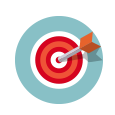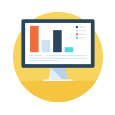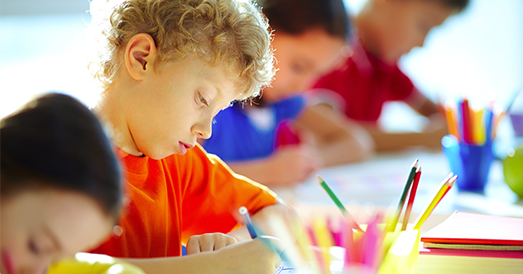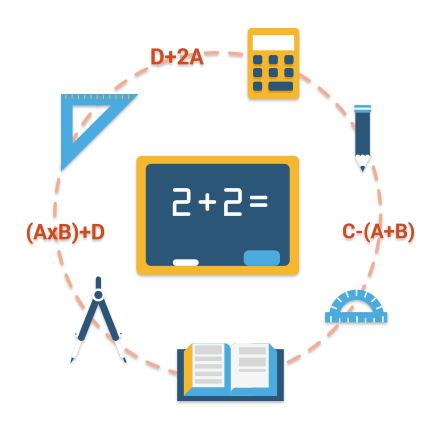Year 1 Maths
When you start Year 1 you will be studying Key Stage 1 mathematics. You will establish basic numeracy skills that will not only become the foundation of your future studies but are also skills that you will need for the rest of your life. One of the first things you will learn is how to use and apply numbers, this includes learning how to write numbers from 1-20 as well as using place value to order numbers too. Once you have mastered basic numeracy skills, you will then move onto simple calculations such as simple additions to the number 10, subtraction up to the number 20 and simple multiplications. Key Stage 1 is completed with Year 2 Maths
.Popular Maths Curriculum Courses in England.
Key stage 1
Year 2 Maths
Subtraction, problems, fractions, calculation-grouping, calculation-multiples, 3-D Shapes, capacity and data are all covered in this course.
Key Stage 2
Year 3 Maths
Subtraction with borrowing, calculation sharing/division, units of time, bar charts and much more is included in this comprehensive course.
Key Stage 2
Year 4 Maths
Topics include multiplication using extended algorithms, introduction to decimals, comparing & ordering fractions to bar charts & pictograms.
Key Stage 2
Year 5 Maths
Year 5 introduces multiples and factors of whole numbers, reducing fractions to lowest equivalent form and rounding decimals amongst other topics.



KS 1 Maths Topics
#
TOPIC
TITLE
1
Using and applying number
The numbers 1 to 5
Objective: On completion of the lesson the student will be able to read, write and identify the words and numerals for the numbers 1 to 5
2
Using and applying number
The numbers 6 to 9
Objective: On completion of the lesson the student will be able to match cardinal words and numbers with groups of 6-9 objects.
3
The number system
Ordinal numbers 1 to 9
Objective: On completion of the lesson the student will be able to match ordinal words and numbers with groups of 1-9 objects.
4
Using and applying number
Zero and counting numbers 1 to 9
Objective: On completion of the lesson the student will be able to recognise, write and match the numeral and word for the number zero.
5
Using and applying number
The number 10
Objective: On completion of the lesson the student will be able to write the numeral and word for the number 10, count up to 10 objects and to match a group of objects to the correct number.
6
Using and applying number
Numbers 11 to 20
Objective: On completion of the lesson the student will be able to write the numeral and word for the numbers 11 to 20, count up to 20 and match a group of objects to the correct number.
7
Reasoning
Simple addition up to the number 10
Objective: On completion of the lesson the student will be able to write simple number sentences that show numbers adding up to another number.
8
Time, months
Months and seasons of the year
Objective: On completion of the lesson the student will be able to: name and order the months of the year, know the number of days in each month, name the seasons in order, and know the number of months in each season.
9
Time, days of week
Days of the week
Objective: On completion of the lesson the student will be able to: name the days of the week in order, recognise them in a written form, be able to answer questions about the days of the week, and have an understanding of a diary.
| # | TOPIC | TITLE | |
|---|---|---|---|
| 1 | Using and applying number | The numbers 1 to 5 | |
| Objective: On completion of the lesson the student will be able to read, write and identify the words and numerals for the numbers 1 to 5 | |||
| 2 | Using and applying number | The numbers 6 to 9 | |
| Objective: On completion of the lesson the student will be able to match cardinal words and numbers with groups of 6-9 objects. | |||
| 3 | The number system | Ordinal numbers 1 to 9 | |
| Objective: On completion of the lesson the student will be able to match ordinal words and numbers with groups of 1-9 objects. | |||
| 4 | Using and applying number | Zero and counting numbers 1 to 9 | |
| Objective: On completion of the lesson the student will be able to recognise, write and match the numeral and word for the number zero. | |||
| 5 | Using and applying number | The number 10 | |
| Objective: On completion of the lesson the student will be able to write the numeral and word for the number 10, count up to 10 objects and to match a group of objects to the correct number. | |||
| 6 | Using and applying number | Numbers 11 to 20 | |
| Objective: On completion of the lesson the student will be able to write the numeral and word for the numbers 11 to 20, count up to 20 and match a group of objects to the correct number. | |||
| 7 | Reasoning | Simple addition up to the number 10 | |
| Objective: On completion of the lesson the student will be able to write simple number sentences that show numbers adding up to another number. | |||
| 8 | Time, months | Months and seasons of the year | |
| Objective: On completion of the lesson the student will be able to: name and order the months of the year, know the number of days in each month, name the seasons in order, and know the number of months in each season. | |||
| 9 | Time, days of week | Days of the week | |
| Objective: On completion of the lesson the student will be able to: name the days of the week in order, recognise them in a written form, be able to answer questions about the days of the week, and have an understanding of a diary. | |||
See More Topics Covered in Year 1 Key Stage 1 Maths
..









